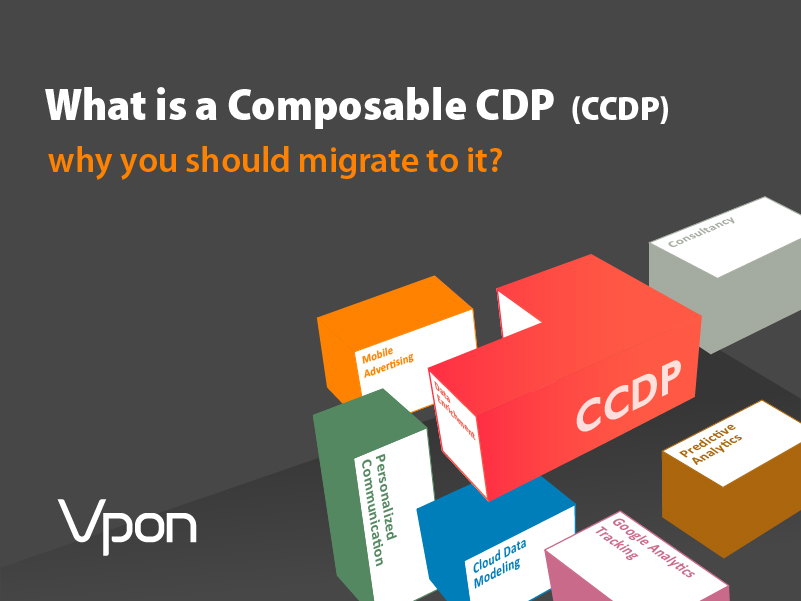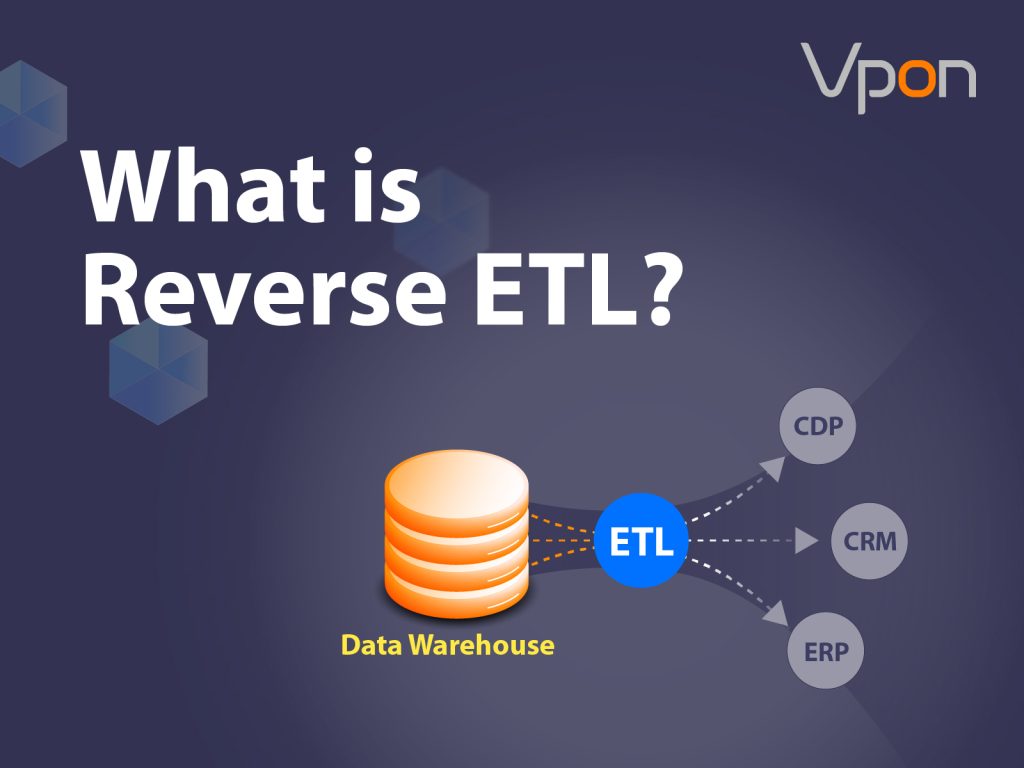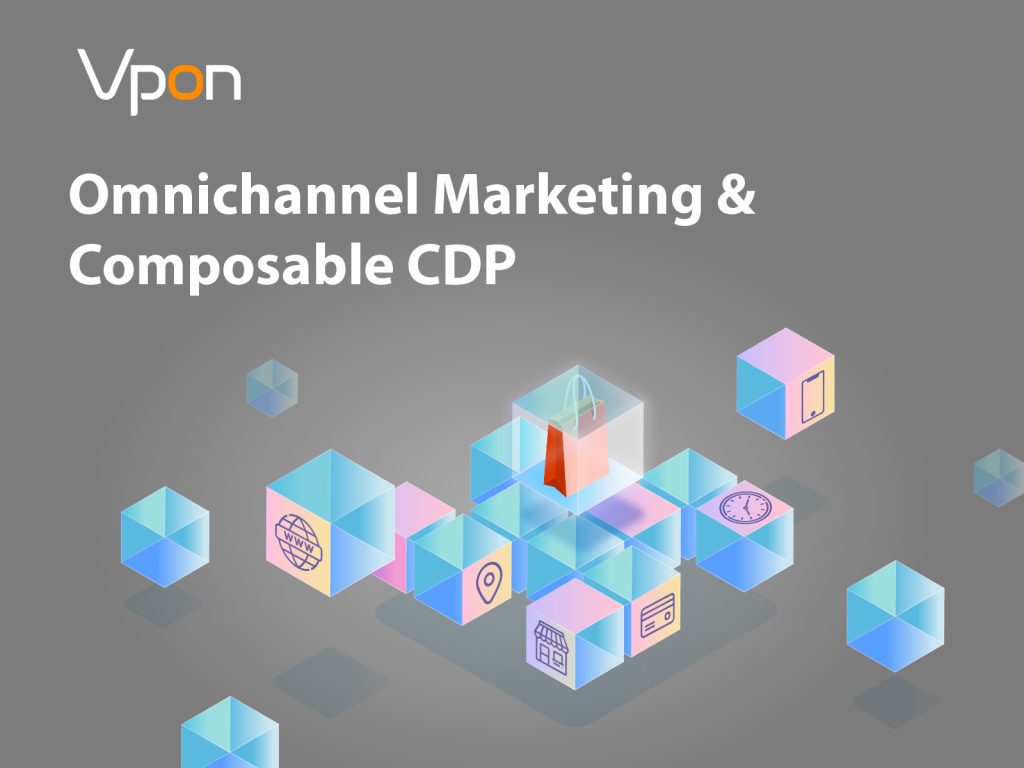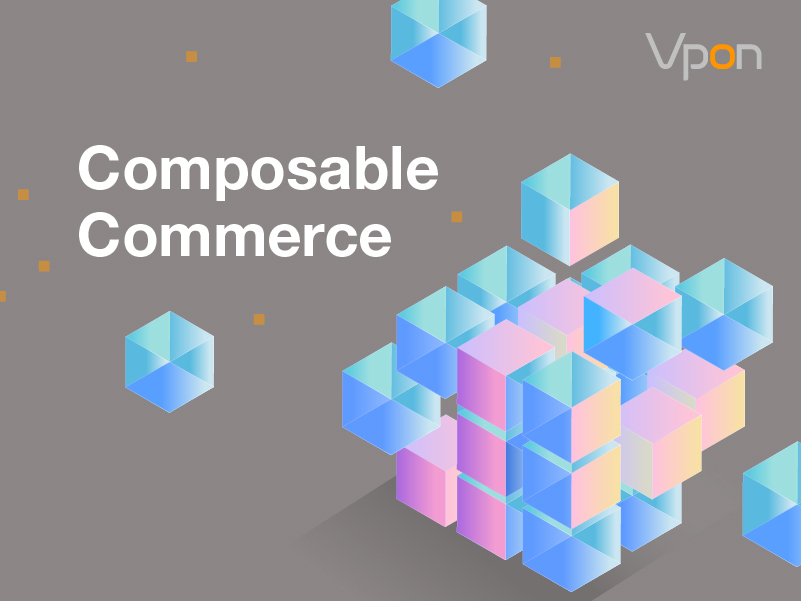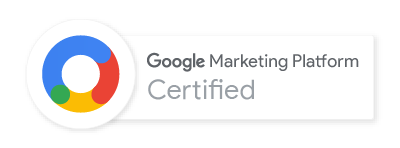What is a Composable CDP (CCDP) and why you should migrate to it?
Learning more about your customers is vital in today’s data world. You can use this information to improve your sales with targeted marketing, identify the most profitable demographics, and generate insights to help you strengthen your business.
The problem is that all this data is scattered across multiple sources. Your marketing team can tell you about how your Facebook campaign is performing. But it’s up to the operation team to tell you how many products you’ve sold. Customer service teams detail the complaints you are getting. Due to these data gaps, this is why a good Customer Data Platform (CDP) is so important. It brings all those data sources together for deeper insights into what your audience is thinking.
But which CDP should you get? For years, the traditional approach to CDP was packaged CDP. But, as the technology has been refined, a new kid has come onto the block. The composable CDP. Let’s dig deeper into both packaged and composable CDPs. Learning what they do, whether you need them, and which option you should choose.
Table of Contents
The Importance of Customer Data Platform for Business
To understand why CDPs are so important, we need to know how things used to work. Before customer data platforms were around, businesses would have Data gurus with the technical experience to interact with data warehouses and all the other non-technical departments like marketing, sales, accounting, etc
But the problem here is that the non-technical teams were left confused when they had to deal with data. So, the data teams had to find ways to bridge this gap by creating data pipelines that allowed information to flow into the software that people were familiar with. This is where traditional packaged CDPs changed this process, making it easier than ever to use the data.
An Introduction to Packaged CDP
The concept of a CDP can be a little confusing, especially if you aren’t a tech person. But it is actually easy to understand. Traditional packaged CDPs gather all your data from various platforms and store it in a central data warehouse so the data can be accessed and used.
For example, in a business with various departments. The sales team will likely use Customer Relationship Management (CRM) to manage customer data, the accounting team might use accounting software to track purchase orders and accounts, and the marketing team will have various analytics software to track and monitor marketing efforts. The problem here is how these departments can communicate and share essential data. CDP solves this problem by aggregating all the critical data and putting it into a central data warehouse to access it for further insights.

Figure1. Customer Data Platform framework
For example, in a business with various departments. The sales team will likely use Customer Relationship Management (CRM) to manage customer data, the accounting team might use accounting software to track purchase orders and accounts, and the marketing team will have various analytics software to track and monitor marketing efforts. The problem here is how these departments can communicate and share essential data. CDP solves this problem by aggregating all the critical data and putting it into a central data warehouse to access it for further insights.
However, your CDP does more than just collect data, it can analyze it and help your business create a unified profile. Using information like usernames, unique identifiers, and email addresses to create a customer profile, the CDP allows companies to create unique customer journeys and experiences for customers.
This extends to tracking your customers before they make a purchase. For example, by using a unique identifier, businesses can gather information on their clients from different data streams like social media, web browsing, app usage, etc.
Once all the data is collected, the CDP becomes one of the most valuable tools for the business by making it accessible to all departments in the organization. Acting as a central source of truth. It’s also easier for business owners to dig into the data to discover new insights to help the business improve its organization but also ultimately create a personal customer experience.
Packaged CDP Explained
Traditionally, packaged CDPs were the only option on the market. This is an all-in-one platform. It is comprised of four components:
- Storage of your customer data.
- Identity resolution to identify and track the interactions of individual customers.
- Following user journey and user experience over a range of channels.
- Wide range of API integrations. Making it easy to send this data to party platforms.
Some packaged CDPs come with additional features. They might allow you to change your privacy settings so you can comply with legal obligations.
All of this comes in a pre-designed package. Because of this, it will be easy to implement. Minimal tech skills or coding knowledge is required. Plenty of pre-built dashboards and integrations, so you can get it up and running quickly. However, you can customize the packaged CDP to suit your needs better.
Disadvantages of Packaged CDP
Packaged CDPs can be powerful tools. But they come with a few significant hurdles that you need to overcome. Let’s look at some of the issues you might face:
Storage and Data Ownership
For your packaged CDP to be effective, it must store customer data. This allows it to verify the identities of your customers. The problem is that this means that you have two sources of data to manage. Your primary data warehouse and your CDP.
To make this worse, storing all that information isn’t cheap. To try and limit the costs, some packaged CDP providers might determine how far back their data stores extend. Reducing the amount of information you can leverage.
Lack of Flexibility
Packaged CDPs come with pre-designed features. Often, they can function as a black box. Making it hard to customize them to suit your company better. Another thing to consider is the interactions that the CDP can track. Many packaged CDPs focus on clickstream data. For example, they can record the number of clicks your pages get or how long someone spends browsing your website.
But this isn’t the only information that you are gathering. You have your own proprietary first-hand data. For example, you might have information you’ve collected from surveys. Or the comments that people have made to your customer service teams. Customer names or email addresses. First-hand information is vital, providing a wealth of insights. However, packaged CDPs struggle with this type of information. You would need to build your own data models, which takes a lot of time and requires extensive coding experience.
Time-to-Value
Packaged CDPs are often sold as an easy way to manage your data. But this isn’t as simple as it appears. Setting up the packaged CDP will take a while. Expect to spend six months fiddling around with it, making sure that it’s working the way you want. But this isn’t where the difficulty ends. You still need to train your staff to interact with it. This can take a few months, depending on the complexity.
Of course, your CDP won’t stay stagnant. As your business grows, you’ll have access to new data, which you must add to your CDP. As we mentioned, this will require the creation of new pipelines, keeping your engineering teams on their toes. You might be forced to start over if you want to incorporate a new use case. Completely redesigning your CDP.
Incomplete Data
CDPs should allow you to better leverage your data. But that might not be the case. Marketers have complained about not being able to get the information they need from a packaged CDP. Limiting their ability to do their job effectively. As CDP can only collect behavioral data or clickstream events, which creates a fragmentation of customer view. Vital information, like the customer’s name or age, can’t be viewed. This is the data that is critical when you are making sales.
There is a way of fixing this problem. You can add the custom data that your team has created. But you’ll need to undergo a considerable engineering effort and expect them to take a long time sorting out the data idiosyncrasies from the packaged CDP.
Hidden Extra Cost
Many businesses have a limited amount of money to spend on software tools. You want to make sure that you’re getting the most bang for your buck. Packaged CDPs are very expensive because every feature is bundled together. Some packages try to sell features separately. However, the CDP won’t provide optimal results unless you pay for collection, storage, and modelling. Regardless of whether you already have a data warehouse that can perform these functions. On top of the costs associated with engineering. And training staff to use the CDP correctly.
Additional Challenges With Packaged CDPs
We’ve looked at some of the most significant issues you might have with packaged CDPs. But there are a few other challenges that you might face as your company grows.
Lack of Model Customization and Flexibility
Traditional CDPs are built to cast a wide net and address general use cases.
The modelling capabilities within these platforms are usually limited to two core objects: users and accounts. This limited view of the customer creates a one-size fits all definition that isn’t readily applicable or usable for many organizations. CDPs are essentially black boxes where all of the data has to conform to the constraints of the provider. In reality, many companies have custom objects like playlists, shopping carts, work spaces, search history, tickets, etc.,that need to be linked to customers.
Scalability Problems Of CDPs
The needs of your business are unique. As you grow, you might increase the data you collect. Your CDP should grow with you. This is something that packaged CDPs struggle with. The cookie-cutter approach makes it harder to customize it to suit your business. As you want to scale your business, you’ll hit more roadblocks. Requiring more time spent on engineering and coding, which in turn will use up more resources.
The Emergence of the Composable CDP
The good news is that you don’t need to rely on packaged CDPs. There is a more modern alternative. The composable CDP. Not only is it more powerful, it’s far easier to use. It acts as a conduit between your existing data collection and storage systems and your frontline tools. Making activating your information simple.
There are a few key elements that a composable CDP have, these are:
- Able to use any data warehouse: CCDP can help you to leverage any data in your organization regardless how it is collected. For example, first-party data, clickstream events, or even offline actions.
- No complex coding: You don’t need to be a tech whiz to use a composable CDP. The user interface is designed to be simple. A mix of open-source and proprietary software is used to create the CDP.
- No data storage: Your composable CDP sits on top of your data warehouse. Unlike a packaged CDP, it doesn’t need to store sensitive customer information.
Why the Composable Approach Is Better
More businesses are gravitating to the composable CDP experience. When you consider the benefits this approach provides, it’s not surprising. Let’s run through the list of advantages:
- No need to get locked into a vendor: Composable CDPs can work with any data warehouse. Allowing you to easily switch and swap between options as your business needs change.
- Modular approach: You can pick the data collection, storage, and activation tools you want. Customizing everything to better suit your business.
- Able to use first-hand data: You can better customize the composable CDP to suit your needs. Allowing you to incorporate valuable sources of first-hand data.
- No need to understand coding: Take the pressure off your data team. Composable CDPs are easy for anyone to set up and use.
For a while, packaged CDPs were ideal. But things have changed. Businesses grew more complex, gathering more first-hand data. It was more important than ever to make the most of your data. Today, composable CDPs are built to handle the demands of your business. Setting them up as the best modern alternative.
The Difference Between Packaged CDP and Composable CDP (CCDP)
Data Integration and Flexibility
Gathering data is crucial for many businesses. It’s how you get to know your customers on a deeper level. Packaged CDPs limit the amount of information you can gather. Typically, they rely on ETL to collect data from frontline tools. They can track click events, telling you how people acted on your website.
Composable CDPs take things one step further. They connect to a broader range of frontline tools. Not just the marketing tools that packaged CDPs focus on. They also utilize your first-party data. Things like the point-of-sale system. Giving you a far more comprehensive understanding of your business’s performance.
That’s not all. Composable CDPs offer significantly more flexibility. Being modular, you can pick the right aspects for your business. Adapting it to gather all the data you need. This approach cuts down on the amount of code you need to write. Saving your business precious time. Making it more accessible to act quickly on emerging trends.
Scalability and Customization
You need to choose a CDP that will grow with your business. Packaged CDPs struggle to do this. Many of these are rigid models. Adding new streams of first-party data can be difficult. Even worse, its black box approach makes it hard to customize. The larger your business grows, the more hurdles you will face.
Composable CDPs are designed with flexibility in mind. Being technology agnostic means that you can change elements easily. For example, is your data warehouse becoming too small? Easy fix, just migrate to a larger one. Making it easy to update your architecture as your business grows.
Data Security and Efficiency
People are increasingly concerned about the way that their data is being used. Protecting valuable information is key. A hack will lose customer trust. Risking serious legal consequences. Composable CDPs don’t store your valuable data. Everything is put in your secure data lake. For example, companies that leverage BigQuery have governance and unlimited access to their customer data. Making it harder for a hacker to gain unauthorized access. Many are built to comply with strict internal rules on data protection.
Protecting your data isn’t enough. You also need to make sure that you are utilizing it efficiently. CDP is the best at activating your data. It allows you access to the custom data your team has collected.
Migration and Transition
Perhaps you already have a packaged CDP and want to upgrade to a Composable CDP. This will require you to migrate your data. While this sounds tricky, it’s pretty easy to do. Just break the process down into steps. Here’s what you’ll need to do:
- Perform a pre-migration assessment: Look at the technology and tools you are currently using. Consider how they might fit into your new CDP.
- Get the right tools: It can help to use a vendor that enables faster data transfer, like Amazon S3 or Google Cloud Storage
- Find the right migration approach: This will depend on your data type. If you don’t have a lot of data, you can Lift and Shift it to the cloud. Moving the data without any modifications. If not, you may need to change the architecture before you move the data. This is a little more complex, but your tech team should be able to handle it.
- Set up your CDP: You might need to establish new pipelines or link up some APIs.
- Check that it’s working: Any new system might have a few kinks to iron out. But composable CDPs are easier than packaged ones.
Migrating to a Composable CDP can be a technical process and take a lot of time. It is important to plan it out in advance. Pick a time that will minimize disruption to your organization, and make sure to have backups of your data. This can also present a unique opportunity to eliminate data pipelines you aren’t using.
Real-World Examples
We’ve learned a lot about the technical advantages of a Composable CDP. But it can help to look at some real-world use cases. Giving you a better idea of how this technology can improve your business.
Creating Personalizing Ad Campaigns
Getting the attention of your customers is becoming increasingly difficult. We are bombarded with hundreds of ads each day. Most of which we just block out. The best way around this is by creating a personalizing campaign. Changing your ad to suit the desires of your customers.
Composable CDPs allow you to gather more first-party data about your customers. Getting a deeper understanding of who your target audience is. You can then pass this along to advertisers. Crafting a more sophisticated campaign means increasing your match rates and lowering your customer acquisition costs (CAC).
For example, you can upload your first-party data to Google Ads. Allowing them to create a lookalike audience based on people in the same demographic.
Another example is identifying individual customers and engaging with them better. For example, someone has been on your site. They’ve picked up an item. But they abandoned the cart before they paid. You can leverage your data to send them cart abandonment messages and encourage them to complete the purchase.
We’ve assisted over 110+ clients in Japan, Taiwan, and Hong Kong with 1st-party data solutions. To reduce acquisition costs or have a deeper understanding for your users or customers, contact us to learn more!
Get To Know Your Customers
Composable CDPs allow you to gather third-party data. Tracking how people use your sites and respond to marketing campaigns. This is combined with first-party data, like customer names and email addresses. You can see what offline action occurred, like tracking what they bought in-store. Getting a more complete overview of your customer base. Allowing you to make informed decisions. Like deciding what future products will perform well or what offers you want to offer to drive sales.
Our 3rd-party data solutions, known for their precise audience targeting and tagging either can be predefined or customized to suit the special marketing scenarios, have set us apart for years. We would be delighted to assist you in identifying your ideal audience or enrich your 1st-party data pool.
Improving The Customer Experience
Getting customers is essential. Keeping them loyal is vital. This is an area that your composable CDP excels in. Imagine being able to communicate personalized messages across multiple channels effortlessly. For example, you might want to send an SMS notifying them that their purchase is complete. While sending an email with confirmation details and a link to tracking data.
We provide audience insight reports, personalization widgets, and marketing activation solutions to craft unique experiences for your potential customers.
Vpon’s Solutions
More and more enterprises are increasingly looking to activate data on top of the warehouse, rather than maintaining two separate data silos in a CDP and a data warehouse. With more than 10 years of experience in advertising and data solutions, Vpon can help our clients to implement CCDP deployment and provide total solutions from data collection, data analysis to data application. with data consultancy services.
Data Collection: GA4 setup, implementation, and analytics planning, along with cloud infrastructure deployment.
Data Analysis: Vpon offers a wide range of insight reports that cater to various needs, from utilizing 1st-party data for user behavior analysis to using 3rd-party data for competitor analysis.
Data Activation: Audience behavior profiling and interest analysis, hyper-personalized recommendations, multi-channel targeting, behavior prediction or advertising experiments, etc.
Data Consultancy: Vpon provides Data Consultancy services to enable enterprises to become truly data-driven. From GA4, Looker Studio to DX workshops, our data consultants will help to streamline each stage of your data journey.
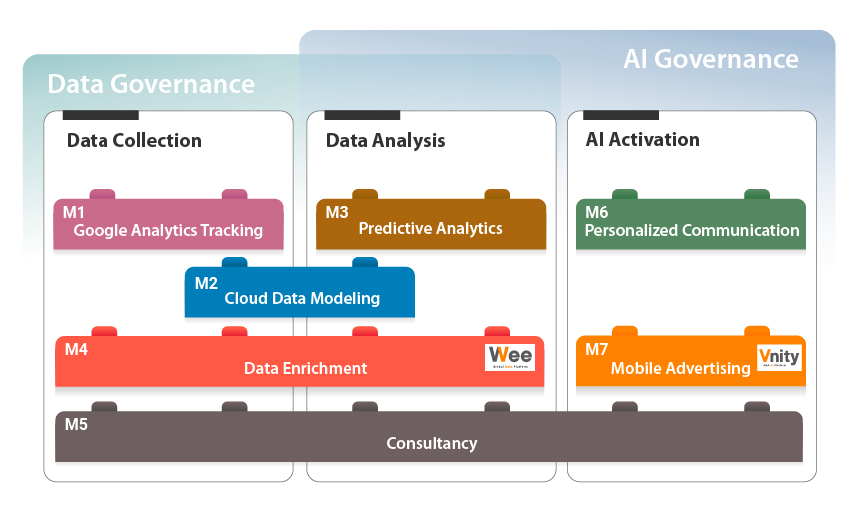
Conclusion
Gathering customer data is useless if you can’t activate it effectively. This is an area that traditional packaged CDPs struggled with. Modern Composable CDPs are the better option. Allowing you to leverage your data with more flexibility, ultimately making life easier for your staff and driving more sales to your business.
Vpon Big Data Group helps mid-sized businesses and enterprises in finance, insurance, government, retail, tourism, marketing & more with their data needs. With a Privacy-Centric Data Collection Approach, companies can rest assured that Vpon follows strict regulations of each industry regarding data. Whether your business is ready for a digital transformation or looking for assistance to implement CCDP with customized KPIs, Vpon is here to help.
If you’d like to learn more about how Vpon can help you to implement CCDP, please feel free to Contact us!
